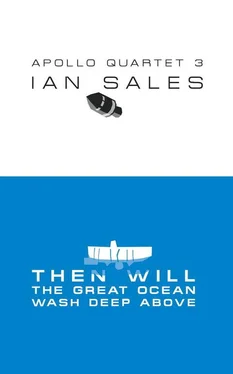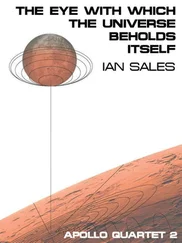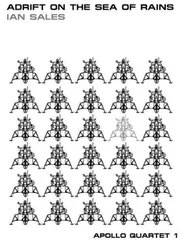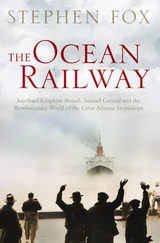The Convair B-60 has a combat range of 2,920 miles, but it is just over 3,600 miles to the North Korean border with China. The bombers will be met en route by KC-135 Stratotankers out of Clark Air Base in the Philippines for mid-air refueling, both on the flight to China and on the flight home.
Within the 171-foot length of the B-60’s fuselage, the crew of ten keep a weather eye open for attacking aircraft. They are in constant contact with Tin City Air Force Station on Seward Peninsula, the most westerly point of land on the North American continent. But they do not know who they should be looking for, Chinese or Soviet. They know only that the massive concentration of forces just north of the Korea border cannot be permitted. The nine megaton B53 nuclear bomb in the bomb bay of each aircraft will see to that.
The US has not been at war since it pulled out of Korea in 1953, and it is not about to see that conflict re-ignited… even if it means using nuclear bombs to prevent it. But the joint chiefs of staff and the president have determined that nothing less will be effective against such a large enemy force.
The B-60s power through the arctic sky, their contrails invisible in the white haze. At an altitude of 53,000 feet, they are above the cumulonimbus cloudbase, and their cruciform shadows run dream-like across the pillowy landscape below. It is peaceful and serene up here, and though the muffled roar of the turbojets is a constant reminder, each crew-member can forget the purpose of their mission, the destruction they have been ordered to wreak, and instead focus on the greater aim, their pursuit of the greater good.
They are peacemakers—and like all effective peacemakers, they are effective because they carry a big stick…
And they are not afraid to use it.
The term “bathyscaphe” was coined by Swiss inventor Auguste Piccard in 1946. After achieving the highest altitude ever reached by a human being in 1938, using a stratospheric balloon, Piccard turned his attention to the depths of the sea. The Trieste was the third bathyscaphe designed by Piccard, and was completed at a shipyard in Trieste—hence the name—in 1953. It comprised a large float containing a liquid of lighter density than water, typically gasoline, water ballast tanks and two hoppers of steel shot. Beneath this float hung a steel pressure-sphere seven feet in diameter, in which the crew of two travelled. Piccard lived and worked in Belgium, and was Hergé’s inspiration for the character of Professor Calculus in his Adventures of Tintin books.

After extensive use in the Mediterranean, in 1958 the Trieste was sold to the US Navy. In January 1960, after fitting a new and stronger pressure-sphere, the Trieste descended 35,767 feet to the deepest known part of the Earth’s oceans, Challenger Deep in the Mariana Trench in the Pacific Ocean, a feat not matched until 2012.
After the Challenger Deep dive, the bathyscaphe had its original pressure-sphere put back, was given a new float, and renamed the Trieste II . In June 1963, the bathyscaphe was used to help search for the wreckage of the USS Thresher . The first in a new class of nuclear-powered attack submarines, the USS Thresher had sunk with all hands in 8,400 feet of water off the coast of New England during sea trials. After further modifications, including yet another new float, and a new pressure-sphere rated to 20,000 feet, the Trieste II was used in October 1967 to gather data on the wreck of the USS Scorpion , a nuclear-powered submarine which had sunk in 9,800 feet of water 460 miles south-west of the Azores.
On 1 June 1971, the Trieste II was officially placed in service, having previously been listed as “equipment”. She was classified as Deep Submergence Vessel 1, and made part of an Integral Operating Unit with the USS White Sands , an auxiliary repair dock, and the USS Apache , an ocean-going tug.
It was as part of this IOU that the Trieste II was sent in September 1971 to an area of the Pacific Ocean just north of Hawaii.

During the Cold War, both the USA and the USSR operated a number of spy satellites in orbit. These overflew enemy territory and took photographs of sites of interest to their respective nation’s intelligence services. During the 1960s and early 1970s, neither television nor the radio transmission of imagery was at a sufficiently advanced level for this job. As a result, the satellites carried film cameras, and once the film had been fully exposed it was, in US spy satellites, jettisoned and fell to earth in a specially-designed re-entry vehicle, called a “bucket”. These safeguarded the film during their fall to earth, much like a space capsule. And, also like a space capsule, the bucket would release a parachute in order to slow its descent. However, rather than splash down into the sea, the bucket would be caught in mid-air by an aircraft fitted with a special hook, typically a USAF JC-130 Hercules flown by the 6549th Test Group out of Hickam Air Force Base on Hawaii.
On 15 June 1971, the latest in the line of Keyhole spy satellites, the KH-9 HEXAGON, was launched from Vandenberg AFB, California. An improvement on earlier KH satellites, it carried four buckets, and 175,601 feet of nine-inch film. Five days after launch, the satellite ejected its first bucket, containing 40,000 feet of film. Due to a damaged parachute, it was not retrieved in mid-air, but allowed to hit the water and sink. Divers then retrieved it. The second bucket, ejected on 1 July, carried 52,000 feet of film and was successfully captured in mid-air. During the recovery of the third bucket, on 10 July, the parachute snapped off and the bucket hit the sea and sank in almost 20,000 feet of water. The final bucket was successfully retrieved by a JC-130 on 16 July.
The retrieved footage was so superior to that produced by previous spy satellites the CIA decided to try and salvage the sunken third bucket. They approached the US Navy, who proposed using the DSV-1 Trieste II bathyscaphe.
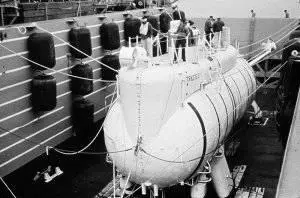
The Integral Operating Unit comprising the Trieste II , USS White Sands and USS Apache set out from San Diego on 27 September and headed 60 miles offshore to test the bathyscaphe’s ability to retrieve an object from the sea floor. Engineering corporation Perkin-Elmer had designed and built a “hay hook”—known by the Trieste II ’s crew as a “kludge”—for the purpose. This fastened on the front of the vessel’s float, and was designed to scoop up the film bucket from the ocean bottom. The first dive on 29 September did not go well—several systems aboard suffered electrical problems, and the winch cable jumped the pulley and broke, dropping the hay hook and causing the DSV to ascend 400 feet rapidly. After forty-five minutes of searching, they eventually found both the hook and dummy bucket, but returned to the surface only with the hook.
A second test dive on 5 October also proved unsuccessful when a failure of the navigation computer meant Trieste II could not even locate the dummy bucket. Meanwhile, the US Navy had sent the USNS De Steiguer, a survey ship capable of towing a search fish at depths of more than 20,000 feet, to the search area to find the missing bucket and mark its location with a deep ocean transponder.
Читать дальше
